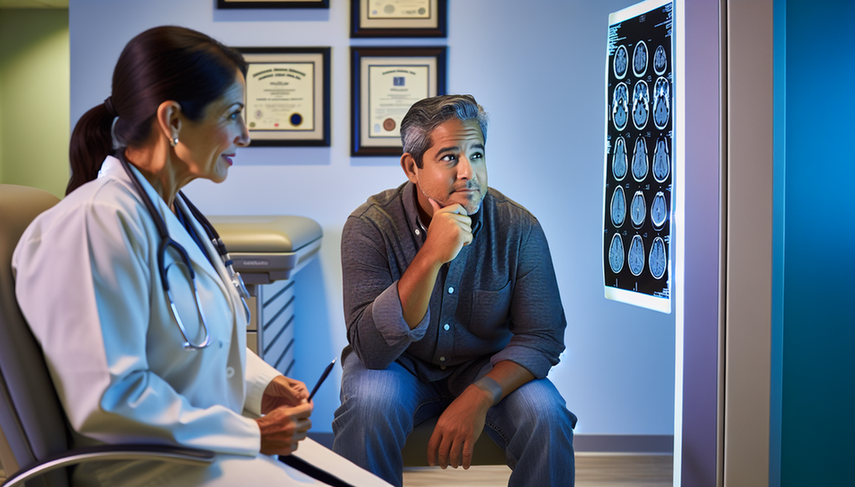Astrocytoma: Recognizing Focal Symptoms and the Importance of Contrast-Enhanced MRI in Primary Brain Tumors

The astrocytoma is a type of primary brain tumor that originates from the glial cells in the brain. These tumors can vary in their degree of malignancy, ranging from low-grade astrocytomas to glioblastomas, which are highly aggressive. Early recognition of focal symptoms is crucial for timely diagnosis and effective treatment. Neurological examinations and contrast-enhanced MRI are essential tools in this process.
Recognizing Focal Symptoms
The focal symptoms of an astrocytoma depend on the tumor's location in the brain. These may include weakness or paralysis on one side of the body, vision problems, speech difficulties, and changes in personality or behavior. Identifying these symptoms through detailed neurological examinations is fundamental for suspecting the presence of a brain tumor.
A recent study has highlighted the importance of total tumor resection in improving survival rates for patients with low-grade astrocytomas, underscoring the need for accurate and early diagnosis [1].
Relevance of Contrast-Enhanced MRI
Contrast-enhanced MRI is an advanced imaging technique that allows for detailed visualization of brain tumors. This technique is particularly useful for differentiating between tumor tissue and healthy brain tissue, which is crucial for planning surgical treatment and assessing treatment response.
A study has shown that dynamic contrast-enhanced MRI can effectively differentiate between pseudoprogression and tumor progression in glioblastomas, which could have significant implications for the management of astrocytomas [2]. Additionally, the evaluation of treatment response maps using MRI has proven useful in distinguishing between recurrent glioblastoma and radiation necrosis [3].
Conclusions
The diagnosis and management of astrocytomas require a multidisciplinary approach that combines clinical evaluation of focal symptoms with advanced imaging techniques such as contrast-enhanced MRI. Early and accurate identification of these tumors can significantly improve patient prognosis and quality of life. Ongoing research in this field is essential for developing more effective and personalized treatment strategies.
Referencias
- [1] Low-grade gliomas
- [2] Dynamic contrast enhanced T1 MRI perfusion differentiates pseudoprogression from recurrent glioblastoma
- [3] MRI Treatment Response Assessment Maps (TRAMs) for differentiating recurrent glioblastoma from radiation necrosis
Created 13/1/2025
